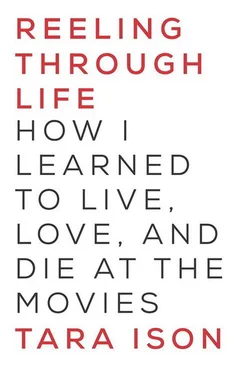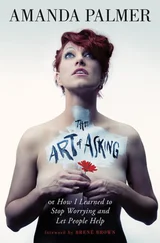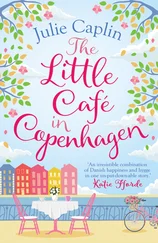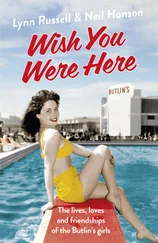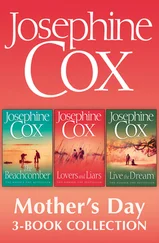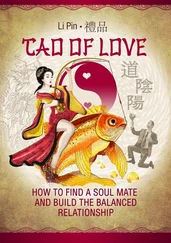My own home was an entirely Godless one; both of my parents were devout atheists, profoundly unspiritual. My family had no religious Traditions! , or none that made any sense: a supermarket challah, or matzoh brei on Sunday mornings, does not a Jewish ritual make. We always had a Christmas tree, because they smelled nice and my mother thought they were pretty and showed off our house to nice effect, and we always “did presents” on Christmas morning, not a celebration of Jesus’s birth, but an orgy of competitive, materialist consumerism. Growing up in the 1970s San Fernando Valley, in the Jewishy enclaves of Encino and Woodland Hills, half my friends were Jewish and half my friends were Gentile (not even “Christian,” just Gentile , broad-spectrum non-Jewish), and I thought that fifty-fifty split was the demographic norm of the entire world until, embarrassingly, my midteens. (Jews are only 1.7 percent of the U.S. population? Really ? Oh, hello, Buddhism! Hello, Islam!) All my Jewish friends had bar and bat mitzvahs to celebrate their thirteenth birthdays, their symbolic arrival at adulthood, and my family attended these events the way we would attend any birthday party or potluck, my father good-naturedly perching a yarmulke on his blond head. I envied the extravagant parties (and extravagant gifts) that came with the coming-of-age ritual, but had zero interest in the Sunday School God stuff, the learn-a-Torah-portion-in-Hebrew part of it. We never went to temple otherwise, and sitting through all those bar or bat mitzvah ceremonies was both awkward and dull, because I felt like a fraud; the devotion to God, the displays of spiritual communion, were as foreign and meaningless to me as the indecipherable Hebrew words. Once I found a cheap, forgotten menorah tucked in the back of a kitchen cabinet, and, visions of my friends’ Eight Nights of Hannukah gifts in my head, I stuck kiddie birthday candles in it and tried to engage my parents in a half-hearted observation (something about oil miraculously lasting eight days. .?), but gave up the effort the third or fourth present-free night in.
The most Jewish we ever got was a negligible Passover Seder at my grandparents’ house, where we flipped through a few pages of the “Haggadah,” a sort of interactive, Manischewitz-stained Idiot’s Guide to Passover , something about Jews escaping slavery in ancient Egypt, frogs and locusts, right, let’s eat! And then came the afikomen (Hide the matzoh!), which I, the youngest child, was tasked with finding, which I always did within minutes and then exchanged for $1 from my Grandpa. My strongest memory is a story of four hypothetical Jewish children asking four different questions about the Passover ritual: The wise child, the wicked child, the simple child, and the child who does not even know how to ask, but I could never quite remember which child asked which question (they all seemed equally irrelevant to anything in my own life), and it instilled in me a fear of ever asking the “wrong kind” of question — I certainly didn’t want to be labeled wicked, simple, or too clueless to even put a proper interrogative sentence together. But over time Passover simply blurred with Thanksgiving: A loud family affair lacking any real ceremony or meaningful observance of history, of political or religious significance, of any tradition beyond green bean casserole and potato pancakes. (Although the fried onions on top of the green bean casserole were, in fact, a holy rite.)
One ritual I was not privy to, but was mentioned by my mother, was the existence of Yom Kippur, the Jewish Day of Atonement; my grandmother had an old record of Kol Nidre, the ancient prayer or declaration of repentance, and according to my mother, my grandmother would once a year on Yom Kippur lock herself in her bedroom alone, play this record, and cry and cry. I didn’t know then, and never will now, what need for repentance drove her to this, moved her so strongly, and in secret, yet: Was it guilt over leading a not-Jewish-enough life? Her failure to pass a true Jewish legacy along to her daughter, her grandchildren? For marrying a man who rejected Judaism? Was she thinking of relatives left behind in a Polish village? Her own long-dead mother and father, that fading Jewish heritage?
As a child, being Jewish meant virtually nothing to me. No one explained exactly what it did mean, or might mean; apparently my exposure to all those wedding horas and bar mitzvah chantings was considered religious education enough: Judaism by social osmosis. I once asked a more-Jewish friend to phonetically write out the Hebrew prayer for candles (or was it bread, or wine?) on a paper napkin, so I could memorize it to impress my grandmother, who didn’t speak any Hebrew. Being Jewish basically meant making self-deprecatory Jewish jokes when I got a nose job at seventeen. It meant incorporating my grandmother’s occasional Yiddish phrases into my speech ( Oy vey! Chutzpah! Kine-ahora! ) to make her laugh. It meant refusing to take the side of Palestine in a sixth-grade debate between Palestine and Israel over territorial rights because it was “against everything I believe in!” although I believed in absolutely nothing and had no clue what any of it was about. Nor did I care. It meant wearing a tiny gold mezuzah necklace my grandfather bought me at a pawn shop, which I loved because it was gold, a grown-up-looking piece of jewelry, and still having no idea what a mezuzah actually was. (And I didn’t ask: I’m no simpleton child.)
And it meant the entire family going to see some movie called Fiddler on the Roof the moment it hit theatres. 18
In 1894 Russian writer Sholem Aleichem published severalstories, in Yiddish, about a pious, warm-hearted Jewish milkman named Tevye, scratching out a living in late-tsarist Russia, dealing with his strong-willed wife and household of challenging daughters while struggling to maintain his unsteady foothold on tradition and faith. There were multiple Yiddish-language stage adaptations of Tevye the Milkman , or Tevye and His Daughters , plus a 1939 Yiddish film version called Tevye , until its incarnation as a big-budget Broadway musical in 1964 called Fiddler on the Roof . The title was inspired by early Modernist Jewish-themed paintings by Chagall, and you can see the Chagallian influence in the faintly Cubist set design, the color palette, even Jerome Robbins’s innovative angular choreography. Fiddler on the Roof was a massive hit: Record-setting performances, international acclaim, a slew of Tony awards (including one for Zero Mostel’s colorful, iconic Tevye), and endless touring productions and revivals ever since. No surprise it would become a big-budget, wildly successful and much-loved Hollywood musical in 1971, produced and directed by Norman Jewison (no, not a Jew), who created an uproar by casting the thirty-seven-year-old Israeli actor Topol as Tevye instead of Zero Mostel: He felt Topol’s earthy Tevye would be less clownish, more realistic.
But it is not reality, to my seven-year-old eyes; it is magic. Movie-going is still a novelty for me, a wonder, a wholly immersive experience; I am enraptured by the beautiful opening images of sunrise over a small village, golden fields and blue sky, and the stunning but perplexing silhouette of a man precariously perched on the roof of house, playing a violin (the haunting violin supplied by Isaac Stern). What is he doing up there, this violinist, this fiddle player, I wonder? Fortunately, it is explained to me — to me , directly, intimately, by a smiling, warmth-exuding, worn-faced man:
TEVYE
A fiddler on the roof? It sounds crazy, no? But here in our little village of Anatevka, you might say every one of us is a fiddler on the roof, trying to scratch out a simple tune without breaking his neck. It isn’t easy. And how do we keep our balance? That I can tell you in one word! Tradition ! Without our traditions, our lives would be as shaky as a fiddler on the roof!
Читать дальше
